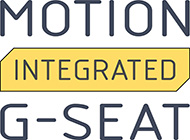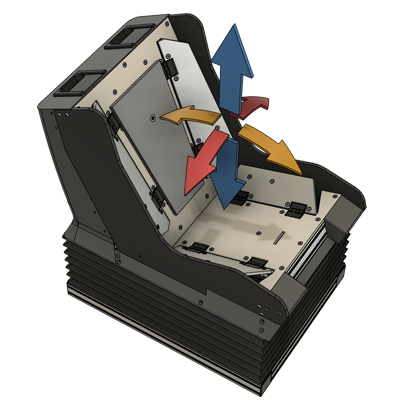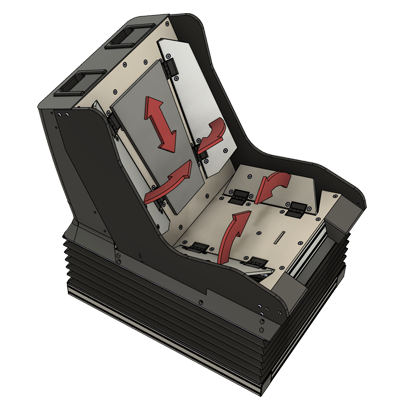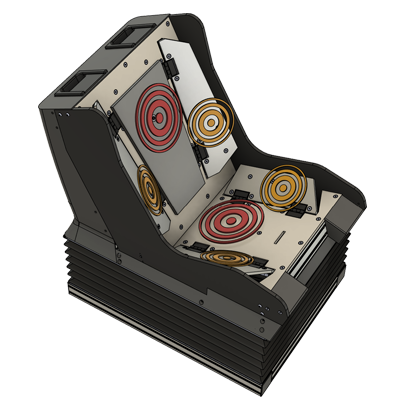

Effects provided by the Motion Integrated G-Seat
All effects described below happen simultaneously and in unison, resulting in an unique experience only the

In contrast to motion platforms, this happens like in the real world, relative to the cockpit and controls, providing the sensation of body inertia inside a moving frame.
This eyepoint shifting relative to the cockpit is in itself a convincing method for providing the sensation of acceleration, and is done software-side in many simulations via virtual head (eyepoint) movement.
In the
Acceleration therefore looks and feels right in fixed-base hardware cockpits, as well as in Virtual Reality - without the need for motion compensation software.

The flaps can move simultaneously, for a sense of overall pressure (or the release thereof) from one direction - like when being pushed down into the seat under positive Gs, or being lifted out of it during negative Gs.
The flaps can also move opposed to each other, in order to increase pressure on one side of the body, while releasing it on the other during lateral accelerations.
A plate on the backrest moves up and down, oposed to the vertical movement of the seat. This enhances the sensation of being pushed down into, or being lifted out of the seat.

Thereby it provides a similar effect as the flaps, by applying (or removing) pressure to the users body where it would feel it under real acceleration.
This comes to play especially turing negative-Gs, where a tensioning of the harness gives a convincing sensation of 'hanging in the straps'.
As the belts can move independently from each other, they are also used to provide effects for lateral acceleration, by tensioning one side while releasing the other.
Likewise during longitudinal acceleration, only the shoulder straps are tensioned (braking) or released (forward acceleration).

In addition to that, vibrating elements mounted to the seat frame and flaps provide feedback for higher frequencies, like engine rumble, gear, flaps and speedbrake actuation, and many more.
The amount of vibration is scalable to the required effect, which gets further enhanced by the fact that the user feels more vibration through elements that currently apply pressure to the body.
back to main page